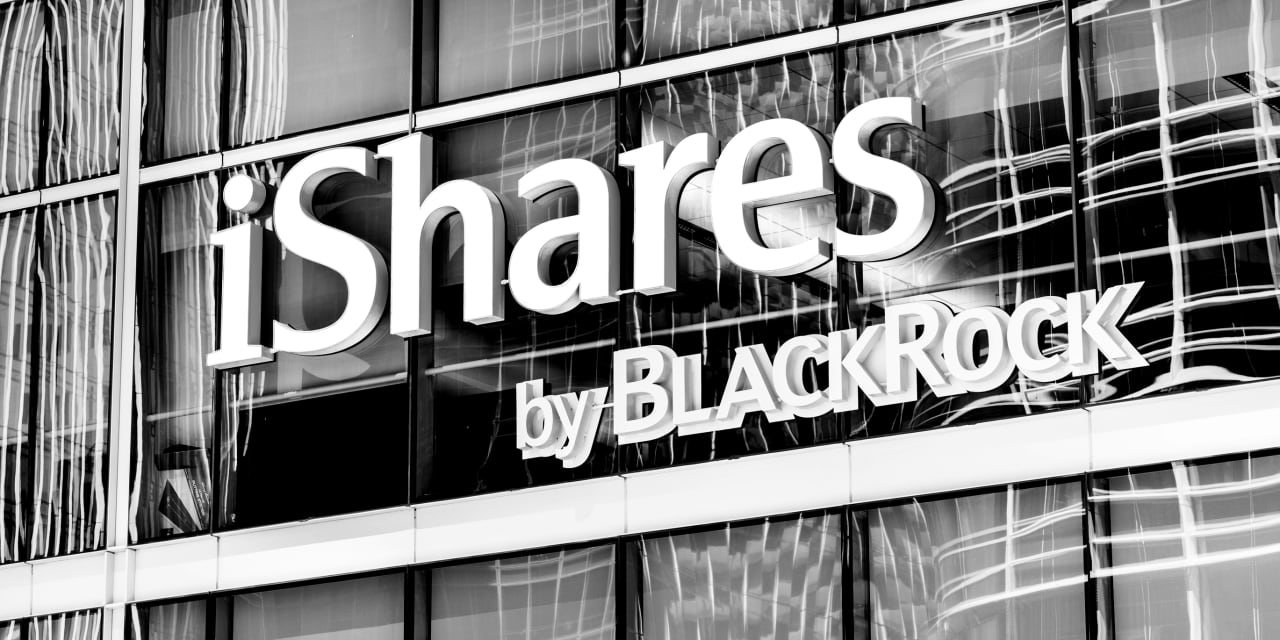U.S. inflation cooled in October, which some investors took as a strong signal that the Federal Reserve is done raising interest rates. This optimism fueled demand for long-dated Treasuries, which drove the price of the largest U.S. long-dated bond exchange-traded fund higher.
The $49.2 billion
iShares 20+ Year Treasury Bond ETF
(ticker: TLT) closed Tuesday up 2.27% at $89.78. Its shares have gained about 8.5% since its 52-week closing low of $82.77 on Oct. 19, outperforming the Nasdaq’s 6.9% gain and the S&P 500’s 5.1% rise over the same period, according to FactSet data. So far this year, the ETF has attracted net inflows of $20.5 billion, according to BlackRock.
“With a large, liquid Treasury ETF like TLT, the only thing that affects the price is interest rates, there’s no credit risk,” said Scott Opsal, director of research and equities for the Leuthold Group, an investment research and asset management firm. “Falling interest rates are the reason TLT is moving higher.”
The odds the Fed holds interest rates steady through its next two meetings jumped after October’s consumer price index climbed 3.2% year over year in October, a slightly slower pace than the 3.7% rate recorded in September and August.
“Long duration funds typically outperform following the end of a hiking cycle and the recent data, such as today’s CPI number, is becoming more and more suggestive that the Fed is actually finished with its hiking cycle,” said Todd Sohn, ETF and technical strategist at Strategas Securities, a macro research provider.
Investment strategists said two factors have fueled the fund’s recent share-price gains and inflows. The first is professional traders and hedge funds covering short positions in U.S. Treasury futures.
“The No. 1 force behind all this is short covering in the Treasury and bond market,” said Opsal.
“Interest rates are falling because of the demand to buy bonds to cover the short future positions,” he added. “It’s kind of the tail wagging the dog. “And driving yields down will make TLT go up. So it is as simple as that.”
Investors who short bonds are betting they will earn profits if the price of the bonds fall. To short long-dated Treasuries, you can buy ETFs such as the
ProShares Short 20+ Year Treasury ETF
(TBF) or the
ProsShares UltraShort 20+ Year Treasury ETF
(TBT).
Shorting bonds is a winning trade if rates rise, as they had until recently, Opsal noted. When rates stop climbing, or start to fall, it can quickly become a losing trade.
Treasury ETFs such as TLT offer investors a simple, low-cost method of adding duration to their bond portfolio, making them a popular tool to act on the changing interest rate outlook.
Jamie Cox, managing partner for Harris Financial Group, said lots of investors have shorted Treasuries through TBT, but that is now changing as recent data suggest the Fed is coming to the end of its rate-hiking cycle. “You get natural buying in TLT as investors unwind their positions in TBT,” he said. “So you have the reverse of what has happened over the last 18 months. And it’s just starting.”
The second factor fueling the iShares 20+ Year Treasury Bond ETF’s recent gains is investors looking to lengthen their portfolio duration believing that interest rates have peaked and could head lower from here. Duration is a measure of interest rate risk—long-term Treasuries have a higher duration and are more sensitive to changes in interest rates.
“There’s a group of investors who have been waiting for the bell to ring who, in their minds, have been saying that once they are sure inflation has been tamed and bond [prices] have stopped going down, they’re going to go long duration,” Opsal said.
“Today’s CPI report is ringing that bell for some people who have been waiting for the day where they think inflation has been licked.”
Retail investors have been able to earn around 5% on short-term investments such as T-bills with no risk, which has been an attractive proposition. “Now the retail investor is saying ‘I can also earn about 5% on a 10-year or 20-year [government bond], but also have the bonus that if rates come down, I get a little capital gain built in,” added Opsal.
TLT represents the long end of the Treasury market and carries a duration of 16.6 years, which means a 1% fall in rates will cause roughly a 16% rise in bond prices.
“That’s about 2½ times more rate sensitive than the [Bloomberg U.S. Aggregate Bond] Index,” said Opsal. “So if you buy TLT with a 16-year duration, you’re making it very clear that you think rates are going to fall and you’re looking to capture that price gain on top of the coupon.”
Write to Lauren Foster at [email protected]
Read the full article here





